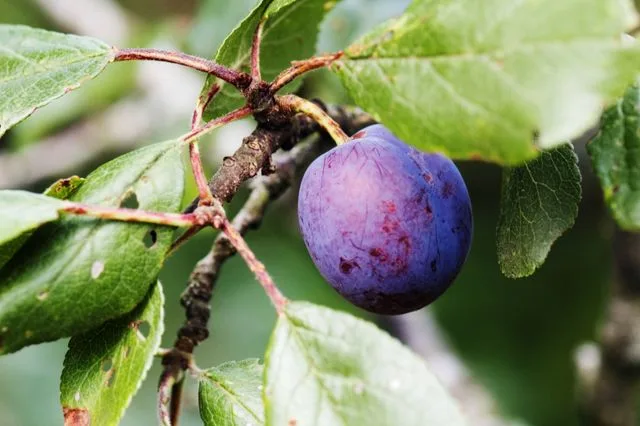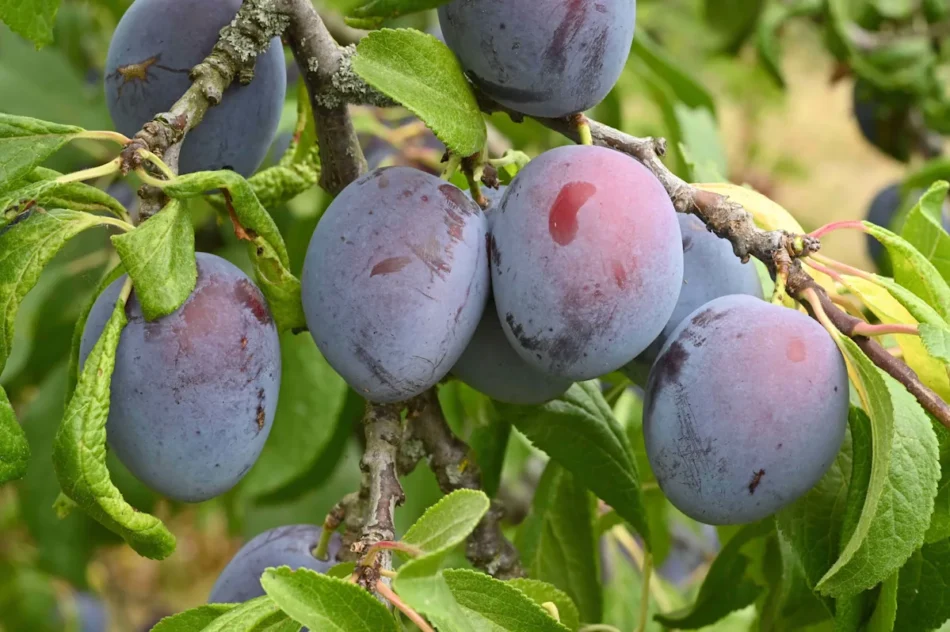Grandmothers elevate something as simple as toast and jam to high status.
Or at least that was the case of my maternal grandmother, Eliza Carr, who fielded calls for the Red Cross after World War II and helped U.S. soldiers at home and abroad as best she could.
When I spent a Friday night at her small Nashville apartment, she might be taking phone calls from those soldiers well after my bedtime, but the next morning she was in the kitchen cooking me breakfast—buttered white toast spread with homemade Damson plum preserves and hot, crisp bacon slices. The balance of textures, sweet and salty flavors, and contrasting temperatures did not escape my young palate.
I remember the taste of those Damsons to this day.
What Are Damson Plums?
Damsons are small, oval, indigo-hued plums with tart, greenish-yellow flesh popular in British, Irish, and early American cooking. Originating more than 2,000 years ago, they have been linked to the area around Damascus, thus their name. It is said the Romans brought them to the British Isles.
Which is how the trees came to Virginia and Tennessee with British settlers. Their tart taste was prized in early jam making, and like wild grapes, they needed to be cooked down with plenty of sugar to make preserves.
My Grandmother’s Plum Preserves
My grandmother’s recipe for two pints of Damson plum preserves called for two pounds of plums to every three cups of sugar. She kept the skins and seeds in the pot while cooking because therein the flavor lies. Once the preserves were set (after simmering about 30 minutes), you fished out the seeds.
Edna Lewis writes in her 1976 book, The Taste of Country Cooking, that the Damson tree of her Virginia home was the most prized fruit tree in the orchard and that “more fuss was made over the tree than the preserves.”

Each Damson tree bore “hundreds of small plums, the shape of birds’ eggs,” but like all good things, the window for Damsons is short—from late August until mid-October, depending on your climate.
Lewis said Damsons should be made into preserves as soon as they are harvested. Like my grandmother, she would wash them and prick them with a needle, cover them with sugar in a preserving pan, and leave to rest overnight (today we wait just four hours). Then the next morning, she brought the pan to a simmer over medium heat and cooked until the fruit was tender and the wine-like syrup thickened.
Edna Lewis left the preserves in the cooking pan overnight where the juices would naturally thicken even further, and the next morning she placed the pan over low heat just to reheat the preserves before spooning into canning jars.
Lewis served Damson preserves with roasted meats and fresh vegetables, and she spooned the preserves into a custard filling for pie. My grandmother served the preserves with toast or biscuits for breakfast.
I had no idea I was being offered a taste of history for breakfast. From a small, old-world plum have come rich memories lasting a lifetime.
Read the original article on Southern Living









